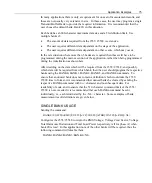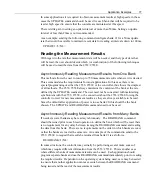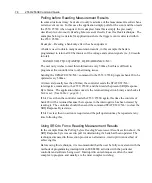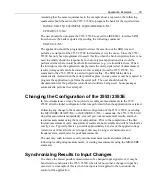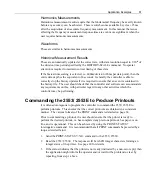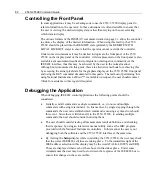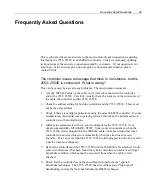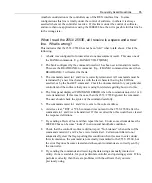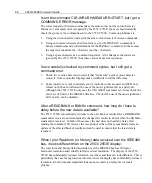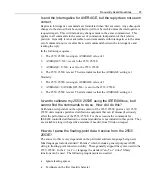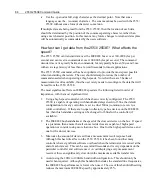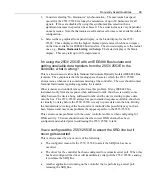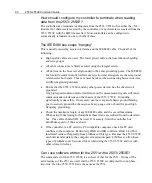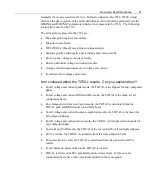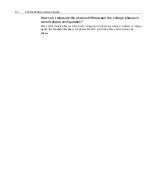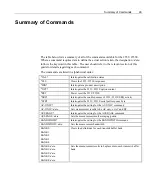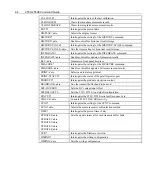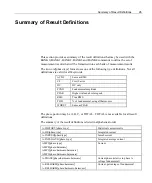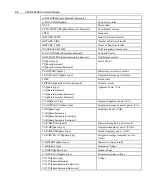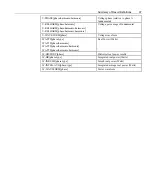
88
2553/ 2553E Command Guide
•
Use the . (period or full stop) character as the decimal point. Note that some
languages use the , (comma) character. The comma cannot be used with the 2553/
2553E without some form of character conversion.
If multiple data are being read from the 2553/ 2553E, then the location of each data
should be determined by the position of the comma separating character, rather than
using exact character position. In this manner any future changes to returned data syntax
will be automatically accommodated by the users software.
How fast can I get
data
from the 2553/ 2553E? What affects the
speed?
The 2553/ 2553E can transmit data over the IEEE488 bus at over 300,000 bytes per
second, and can receive commands at over 100,000 bytes per second. The command
decode time varies greatly between commands, but is typically between 50µs and 3ms,
with an average latency of less than a few milliseconds for most applications.
The 2553/ 2553E command set has been optimized to provide the most speed possible
when transmitting characters. The user should attempt to reduce the number of
commands needed when operating at high speeds. Note that there are 5 banks of
measurement results available, thus the user rarely needs to reconfigure the data that will
be read from the 2553/ 2553E.
The most significant effects on IEEE488 speed are the following listed in order of
importance, with the most significant first –
1.
Using a high-speed controller, which has been correctly configured. The 2553/
2553E is capable of operating with handshake delays down to 350ns, the default
configuration for many controllers is set to either 500ns (common) or even 1µs
(older controllers). If there are no open collector type bus devices on the IEEE488
bus, then this handshake setting can be changed to 350ns for the controller (if
available).
2.
The IEEE488 bus handshakes at the speed of the slowest device on the bus. If speed
is a premium, then ensure that all connected devices are capable of high-speed
operation or consider using more than one bus. One for the high speed devices, and
one for the slower devices.
3.
Maximize the amount of data read from a measurement result response bank.
Although this has little affect on the 2553/ 2553E, it has been found that many
controllers have significant software overhead when the terminator is received at the
end of each data set. This can be several milliseconds and is very dependent on the
particular controller and software used. Avoid displaying every measurement
received, this can significantly slow down the maximum available transfer rate.
4.
Avoid using the 20Hz to 100KHz bandwidth configuration. This should only be
used when required. Although this bandwidth includes the standard line frequencies,
the IEEE488 bus performance is lower when used. The use of this bandwidth setting
reduces the maximum IEEE488 speed by approximately 25%.
Summary of Contents for Xitron 2553
Page 1: ...IEEE488 COMMAND GUIDE 2553 2553E Three Phase Power Analyser ...
Page 2: ......
Page 10: ...10 2553 2553E Command Guide ...
Page 38: ...38 2553 2553E Command Guide ...


